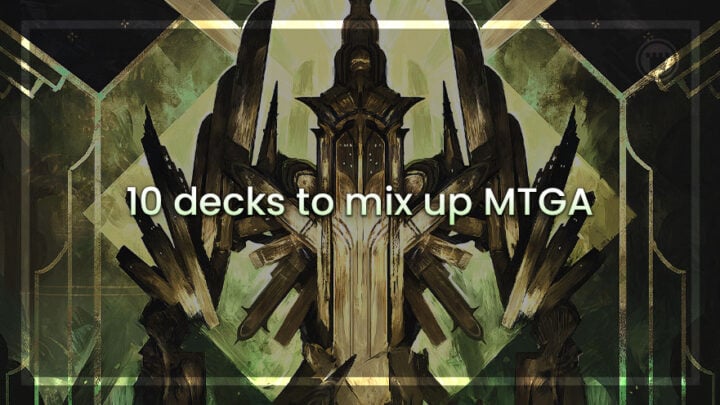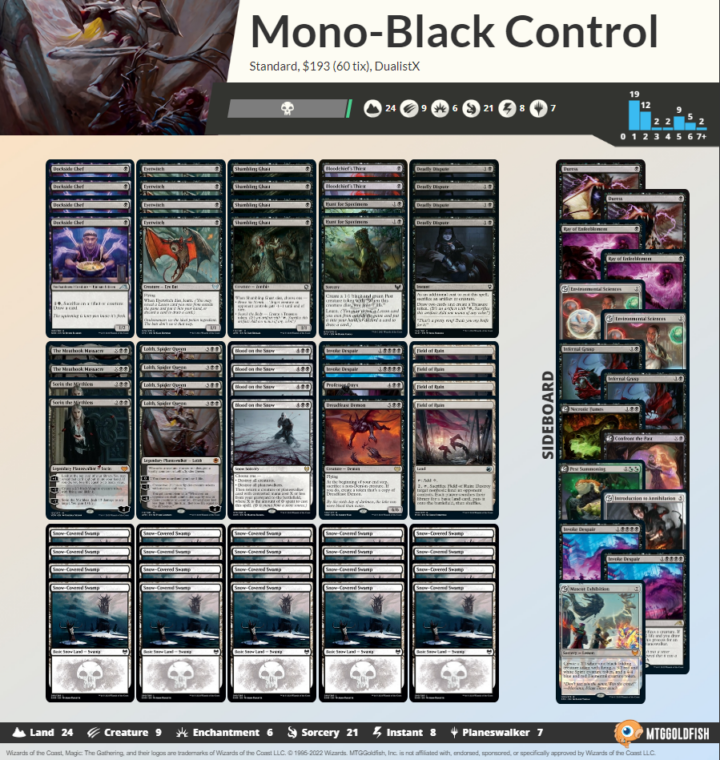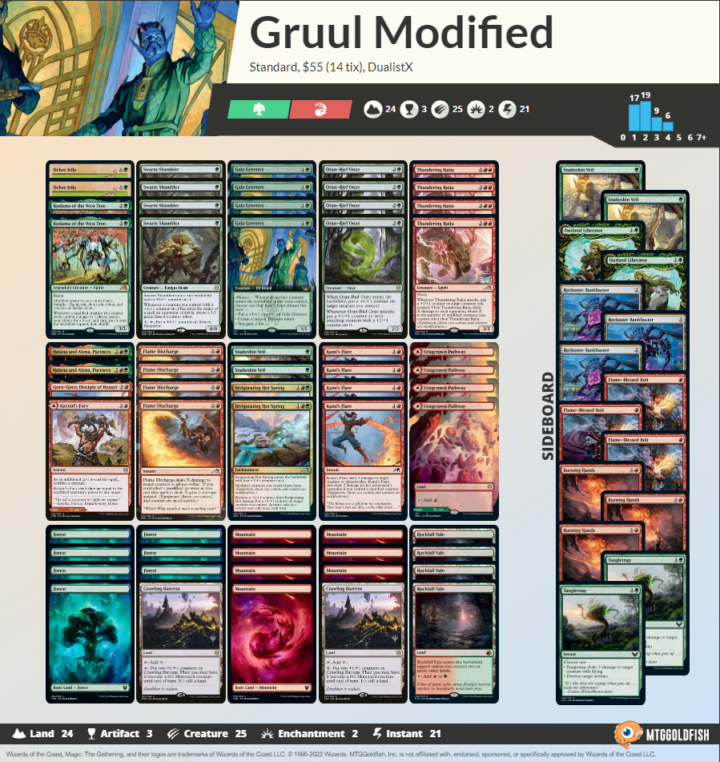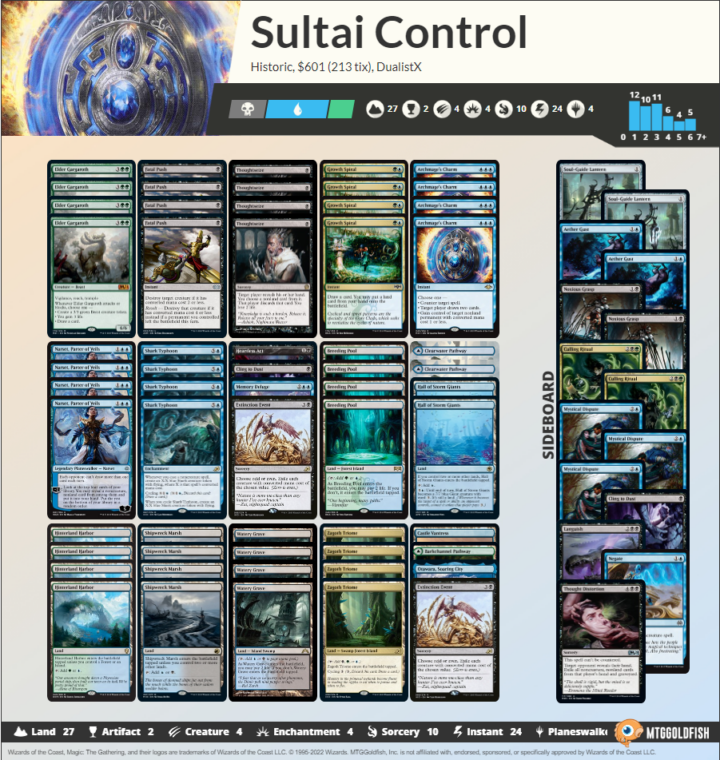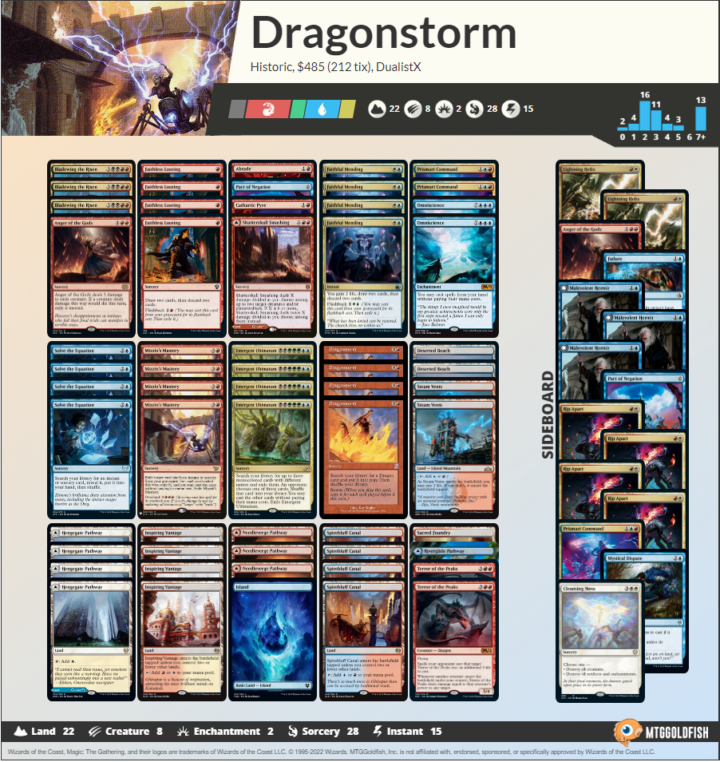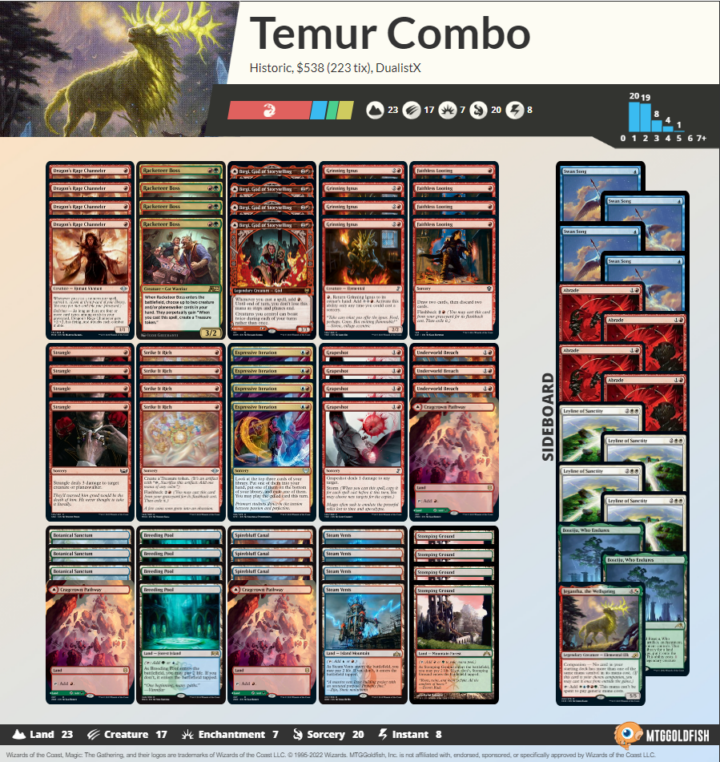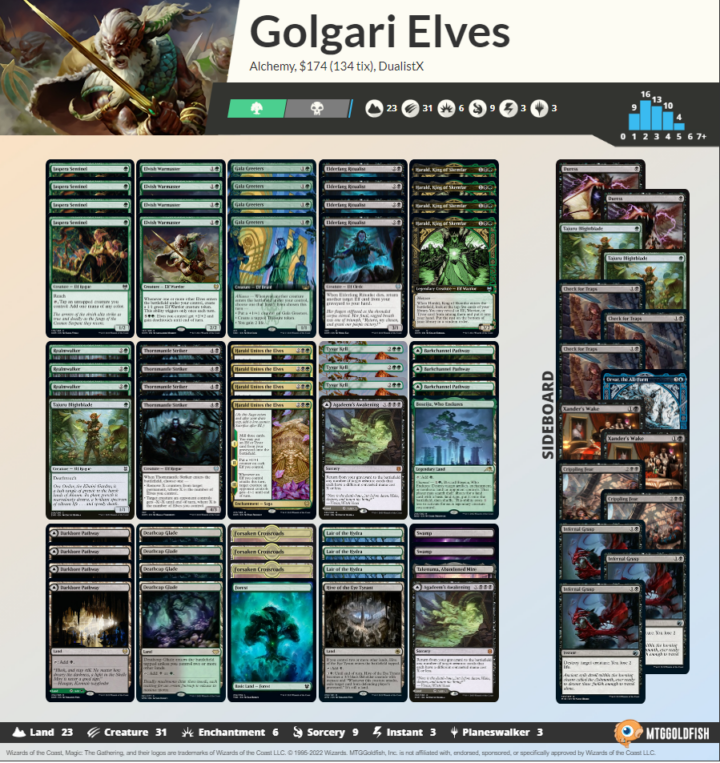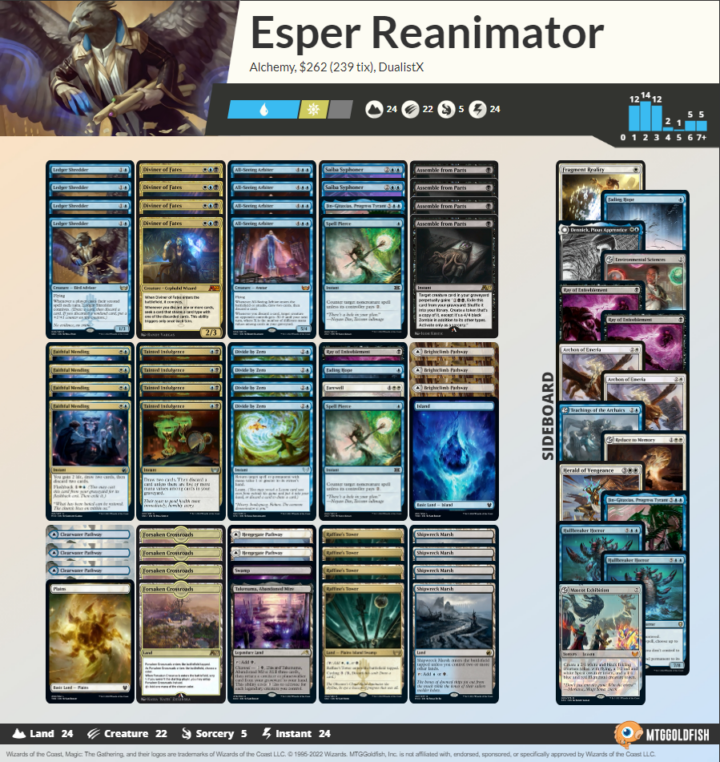Sometimes playing Magic: The Gathering can feel like facing the same decks repeatedly when formats grow stale. This, however, is an inevitable part of the game.
There will always be some best deck that performs better than the competition. Pros and other players familiar with each format call these the “tier 1 decks.” These decks then inevitably become more popular as they put up results at big tournaments or when they pop off on social media. Yet, even when it feels like you can’t escape the meta, other options always exist.
There are plenty of other competitive decks out there if you know where to look — and fortunately you don’t have to go far. Here are 10 decks that are flying a bit under the radar despite being powerful enough to get you some wins in challenges and on the ladder.
Standard Decks
Standard is a somewhat polarized meta at the moment, and it’s largely filled with Hinata combo and midrange decks across all color combinations. You’ll rarely face aggressive decks, but exceptions like mono green can hit hard.
If that sounds boring to you, though, here are some brews that will definitely catch your opponent off guard.
No. 5 Naya Landfall
This list went undefeated in an MTGO league a few weeks ago, and there’s a lot to love about it. It might not seem to be doing much at first, but your opponent will have a hard time taking back control of the game once a Felidar Retreat resolves.
The ideal draw looks something like turn two Emergent Sequence, turn three Felidar Retreat and then you start creating multiple cats each turn. Successfully executing this strategy will have Esika’s Chariot players jealous of your board.
Wrenn and Seven plus Splendid Reclamation is also solid given the number of fetch lands this deck runs. However, the real deal begins when Valakut Exploration starts getting value. You usually won’t be able to play all the cards exiled with it, but that’s just fine. Anything left over is straight damage to your opponent’s face.
Last but not least, don’t be surprised if you happen to kill your opponent with an unanswered Fearless Fledgling or Brushfire Elemental, which can quickly seal the deal on their own before there’s time to react.
No. 4 Azorius Delver
This is another deck that’s been putting up good results in MTGO Challenges. Yes, that’s right, Delver of Secrets can still be a powerhouse in Standard. It just hasn’t seen much play because few decks can support it—but this deck doesn’t have that problem.
This deck plays very similar to a Voltron build where you turn a small creature into a massive threat with keywords double strike and vigilance. Then, you can kill your opponent in as few hits as possible.
To ensure that’s possible, you run multiple protection spells in the form of You See a Guard Approach and Sejiri Shelter. Slip Out the Back accomplishes a similar job, the difference being you can also use it to clear a blocker.
As for the beaters outside of Delver of Secrets, Illuminator Virtuoso is probably the second most valuable creature thanks to the way it smoothes your draws. And Stormchaser Drake just refills your hand when you cast it.
This is a fun deck to try because the mana base will 100% make opponents you’re playing control. Little will they know, everything but control is about to come at them.
No. 3 Mono-Black Control
Some people may prefer Orzhov over straight Black control decks, but this Mono Black Control list brings access to two of the best cards in this color: Invoke Despair and Blood on the Snow (plus a solid mana base, of course).
Invoke Despair is huge against lots of decks since it removes pesky threats like Fable of the Mirror-Breaker without the need for any other card. Meanwhile, Blood on the Snow can help you deal with anything else, all while reanimating a creature or a Planeswalker onto the field post-board wipe.
This deck also runs the Learn package, which utilizes an excellent mechanic few decks can support. Pair that with perfect mana every turn and you’ll win tons of matches. If everything else fails, you can always surprise your opponent by turning your 1/1 creatures into copies of Dreadfeast Demon.
No. 2 Gruul Modified
Kamigawa: Neon Dynasty introduced the Modified keyword, but it needs enchantments, equipment and counters to work. The latter two are what you’re exploiting with this Gruul Modified deck, since virtually everything is using the mechanic one way or another.
This may seem too cute to work at first, but every creature in the deck needs an answer. They’ll hit harder every time they attack if left unchecked. Thundering Raiju and Halana and Alena, Partners are perfect examples of the pressure you can apply.
That pressure makes decks like this very hard to beat without the right answers on hand, which makes it great in a closed metagame like the MTGA.
No. 1 Simic Ramp
Simic Ramp has been hot for the past few weeks and is, without a doubt, the best Standard deck on this list. The plan for playing it is simple: ramp into things that virtually win you the game on the spot if cast early.
Cyclone Summoner is a beast in a format with so many tokens prevalent in the metagame. Following that up with the likes of Titan of Industry or Koma, Cosmos Serpent post-sideboard creates a board state that’s just very hard to overcome.
Historic Decks
Historic is a wild format where Izzet Phoenix and Food Sacrifice used to dominate. But most pieces of both decks have been severely nerfed, and now we’re staring down a whole new meta.
These three decks are top contenders for claiming the vacant, No.1 spot.
No. 3 Sultai Control
Midrange and control strategies haven’t been great overall, mostly thanks to the presence of the previous top dogs. However, now that they’re presumably gone, these kinds of decks will rise in popularity.
This Sultai Control list in particular is good at controlling the board during the early turns while ramping into significant threats later on. Basically, introduce your opponents to Elder Gargaroth.
The other finisher in the deck is Shark Typhoon. While simple, you don’t need too many other threats thanks to powerful removal (like Fatal Push and Heartless Act) alongside insane disruption (in the form of Thoughtseize and Archmage’s Charm).
No. 2 Dragonstorm
The second deck on the list is a personal favorite: Dragonstorm. This build has been around for a while, but it gained some new tools to bring it to the next level.
Ideally, you’d like to loot away your Dragonstorm or Emergent Ultimatum and cast it with the help of Mizzix’s Mastery. Then, you can assemble the combo from there and potentially win on the spot.
That’s the ideal plan. But in reality, I love this deck because it runs dragons—which is enough to seal the deal for me. It’s still a very competitive deck that can easily steal the first game of every match.
No. 1 Temur Combo
The last list for Historic is the Temur Combo deck featuring a card recently banned from Alchemy, Grinning Ignus. It turns out the deck’s core is still intact in Historic. So, with a better mana base and a solid win condition in the form of Grapeshot, this deck can steal victory if you can assemble the necessary pieces.
The key to this deck is you also have access to Underworld Breach, which is extremely good at getting value from your graveyard for very little mana. I can imagine this will be very good in the near future, and you saw it here first!
Alchemy Decks
Alchemy is the last format to cover. Since it’s kind of anybody’s format now, here are two very solid and flexible decks in the current meta, which means you can modify accordingly and still get great results.
No. 2 Golgari Elves
Golgari Elves is an all-time favorite across Magic’s history, but it’s been a while since we’ve seen it performing well in non-eternal formats. Still, this list is excellent as its creator, Andrew Cuneo, who spent considerable time making it competitive.
The plan is simple: cast a bunch of elves and overrun your opponent. Well, that’s not quite all. There are also tons of synergies and redundancy to overcome grindy matches, which is critical in a format where Grixis color variant decks are packed with lots of removal.
This is a fun deck to try that can go over the top quickly if your opponent stumbles for a couple turns.
No. 1 Esper Reanimator
Last on the list is Esper Reanimator. While this isn’t necessarily a new archetype, it’s one that got some buffs with the introduction of the Connive mechanic in Streets of New Capenna.
You’ll play this as a control deck and,nd while your opponent may think they’re facing just that, they’ll be surprised to see Jin-Gitaxias, Progress Tyrant hitting the battlefield as early as turn four.
It’s also worth mentioning there aren’t a lot of other graveyard-based decks in the current meta, so cards like Unlicensed Hearse aren’t very prevalent. This is excellent for this particular deck, since you pretty much won’t ever have your plans disrupted.
If you’re looking for more deck ideas, be sure to check out Draftsim’s MTGA addon, Arena Tutor. The app will soon be able to give you suggestions for which decks to build based on the cards in your MTGA collection, showing you the full potential at your disposal.

